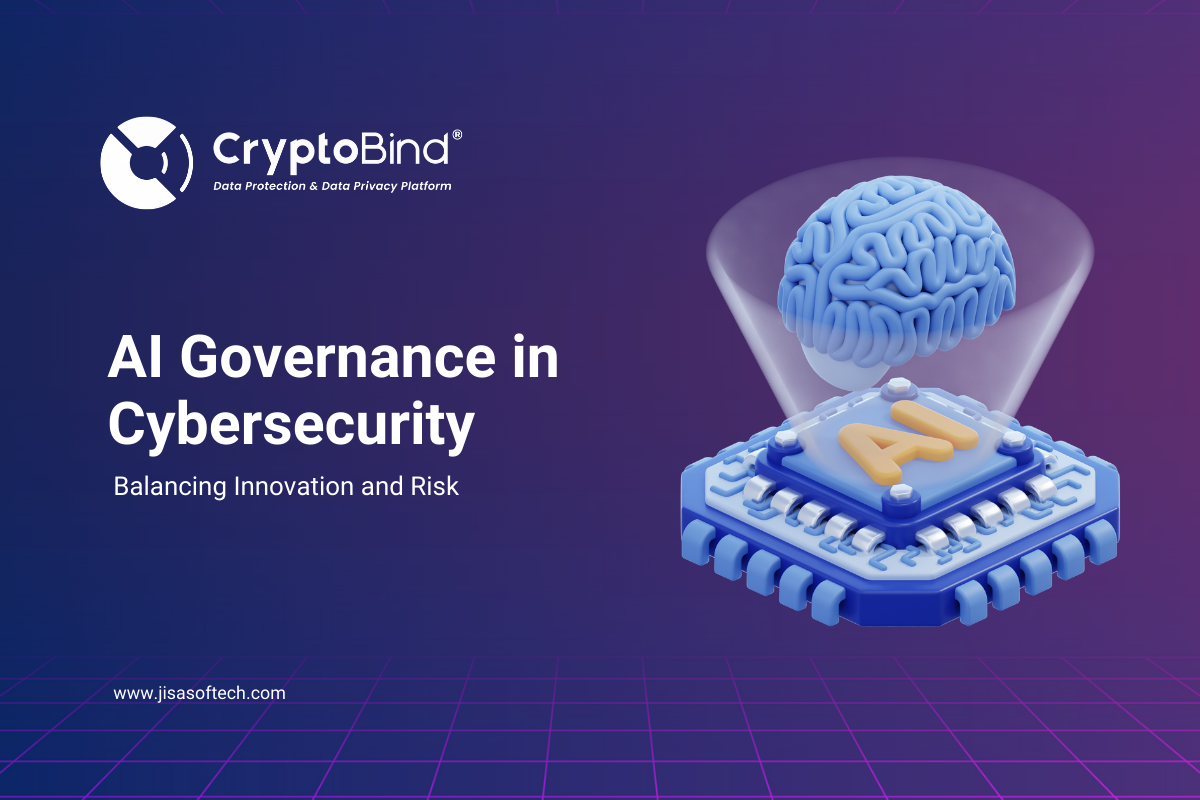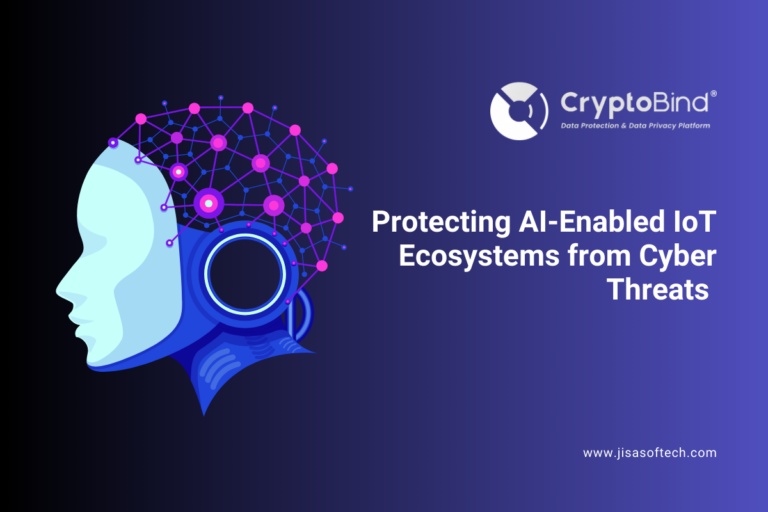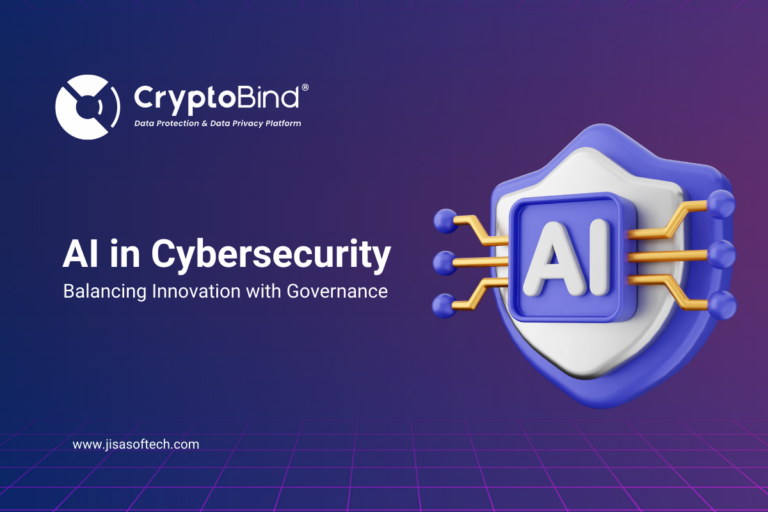AI Governance in Cybersecurity: Balancing Innovation and Risk
Artificial Intelligence (AI) is reshaping the cybersecurity landscape, enabling organizations to detect threats faster, automate responses, and enhance overall security posture. However, as AI-driven solutions become more sophisticated, they also introduce new challenges—ranging from algorithmic bias and data privacy concerns to regulatory compliance and the risk of adversarial attacks. Without a well-defined AI governance framework, businesses may find themselves vulnerable to unintended consequences that could compromise security and trust.
Striking the right balance between innovation and risk management is crucial. Organizations must adopt responsible AI practices, ensuring transparency, accountability, and compliance with evolving cybersecurity regulations. In this blog, we explore the key principles of AI governance in cybersecurity and how businesses can navigate this complex landscape while harnessing AI’s full potential.
The Importance of AI Governance
What is AI governance?
It refers to the legal and ethical framework for developing and using AI technologies responsibly. It ensures that AI-driven systems align with human rights, privacy standards, and accountability principles. Given AI’s increasing influence across industries such as healthcare, finance, retail, and cybersecurity, establishing governance mechanisms is no longer optional—it is essential.
Key areas of AI governance include:
- AI safety and misuse prevention
- Regulations on AI automation in critical sectors
- Legal and institutional frameworks for AI deployment
- Ethical considerations surrounding AI decision-making
- Data privacy and security protections
- Mitigation of AI bias and discrimination
Governance frameworks bridge the gap between AI accountability and ethics, ensuring that AI applications do not undermine fundamental rights or expose individuals and businesses to unforeseen risks.
The Growing Role of AI in Cybersecurity
Cybersecurity threats are evolving rapidly, with sophisticated cybercriminals exploiting vulnerabilities in digital systems. AI is playing a crucial role in fortifying cybersecurity by enhancing threat detection, response, and management. Through machine learning and deep learning models, AI analyzes vast datasets in real time, identifying and mitigating threats that traditional security tools might miss.
Some Key Advantages of AI in Cybersecurity Include:
- Advanced Threat Detection – AI algorithms can detect patterns of anomalous behavior that indicate cyber threats. Whether identifying zero-day vulnerabilities or recognizing phishing attempts, AI-powered security systems proactively detect risks before they escalate into significant security breaches.
- Enhanced Threat Identification and Analysis – AI continuously learns from cybersecurity incidents, adapting to new attack vectors and evolving strategies. By analyzing data across multiple sources, AI enhances threat intelligence, enabling security teams to prioritize high-risk threats efficiently.
- Automated Incident Response – AI-driven security solutions automate response actions, such as isolating compromised systems and blocking malicious activities. These automated defenses significantly reduce incident response times and minimize the potential damage caused by cyberattacks.
- Improved Vulnerability Management – AI enhances vulnerability management by assessing and prioritizing security risks based on potential impact. Automated vulnerability scanning helps organizations identify weaknesses before cybercriminals can exploit them.
While AI strengthens cybersecurity, it is also susceptible to manipulation. Cybercriminals leverage AI-driven attacks, such as deepfake technology and AI-powered malware, making AI governance critical for mitigating risks.
Examples of AI Governance in Cybersecurity
AI governance encompasses various policies, frameworks, and best practices designed to ensure the responsible and ethical use of AI technologies. Organizations and governments worldwide implement these measures to balance innovation with risk mitigation. Below are some key examples of AI governance in action:
1. General Data Protection Regulation (GDPR)
While the GDPR primarily focuses on data protection and privacy, it plays a crucial role in AI governance—especially for AI systems that process personal data within the European Union. The regulation enforces transparency, accountability, and data minimization, ensuring AI-driven decision-making aligns with privacy rights and compliance requirements.
2. OECD AI Principles
Adopted by over 40 countries, the OECD AI Principles emphasize the responsible and ethical development of AI. These guidelines promote transparency, fairness, human-centered AI systems, and accountability, serving as a global benchmark for trustworthy AI governance.
3. AI Ethics Boards
Many organizations have established internal ethics boards or committees to oversee AI initiatives and ensure compliance with ethical standards.
By implementing robust AI governance frameworks, businesses and policymakers can harness AI’s potential while safeguarding privacy, security, and ethical integrity.
AI Governance Frameworks for Cybersecurity
Effective AI governance ensures that AI-powered cybersecurity solutions adhere to ethical principles and regulatory standards. Several governance frameworks and policies have been introduced to regulate AI deployment and minimize associated risks.
1. The AI Bill of Rights
The White House’s Office of Science and Technology developed a Blueprint for an AI Bill of Rights, outlining five fundamental principles:
- Safe and effective systems: AI should be rigorously tested to prevent harm.
- Algorithmic discrimination protections: AI must be free from biases related to race, gender, and other classifications.
- Data privacy rights: Individuals should have control over their data and be safeguarded from abusive practices.
- Transparency and explainability: AI-driven decisions should be clear and understandable.
- Human oversight: Users should have the option to opt out of automated decisions in favor of human intervention.
2. Regulatory Compliance
Organizations must comply with international AI regulations, such as DPDPA and GDPR, which mandate strict data privacy and security policies. Ensuring AI-driven security tools align with regulatory requirements reduces the risk of legal and ethical violations.
3. Trustworthy AI and Ethical AI Development
AI governance should focus on ensuring AI’s transparency, accountability, and fairness. Trustworthy AI is essential for cybersecurity applications, where biases or errors could lead to misidentifications, security breaches, or compliance violations.
4. International Collaboration
Cybersecurity threats transcend borders, necessitating international cooperation in AI governance. Governments, cybersecurity experts, and AI developers must collaborate to establish global AI security standards and promote ethical AI use.
5. Stakeholder Engagement
AI governance should involve stakeholders across various levels, including CEOs, data protection officers, cybersecurity experts, and policymakers. Inclusive decision-making ensures AI-driven cybersecurity solutions address diverse concerns while maintaining ethical standards.
The Future of AI Governance in India
India’s AI governance landscape is poised for transformation, driven by a blend of regulatory advancements, adaptive policymaking, and a commitment to ethical AI development. As AI technologies—such as generative AI, deep learning, and autonomous systems—become more sophisticated, regulations must evolve to mitigate emerging risks while fostering innovation.
- Data Protection as the Foundation – India’s forthcoming data protection law will be critical in setting comprehensive standards for AI-driven data collection, usage, and storage.
- Addressing Algorithmic Bias and Transparency – AI governance policies must proactively tackle challenges like algorithmic bias and fairness, especially in high-impact sectors.
- Certification and Ethical AI Standards – India may introduce certification programs for AI technologies to enhance trust and compliance.
As India shapes its AI governance framework, a balanced approach will be essential to fostering innovation while ensuring ethical safeguards.
Conclusion
AI governance in cybersecurity is crucial for balancing technological innovation with risk management. As AI-driven cybersecurity solutions become more sophisticated, organizations must adopt ethical AI governance frameworks to ensure security, fairness, and transparency. By implementing robust AI governance platforms, adhering to regulatory compliance, and fostering international collaboration, AI governance can empower businesses to leverage AI’s full potential while minimizing risks. The future of cybersecurity depends on responsible AI governance—ensuring AI remains a force for protection rather than exploitation.
Ensure your AI-powered cybersecurity solutions are secure, ethical, and compliant! Implement a robust AI governance framework to balance innovation with risk management. Stay ahead of evolving threats with responsible AI governance practices.
Contact us today to learn more about data protection and privacy requirements in the AI age!








